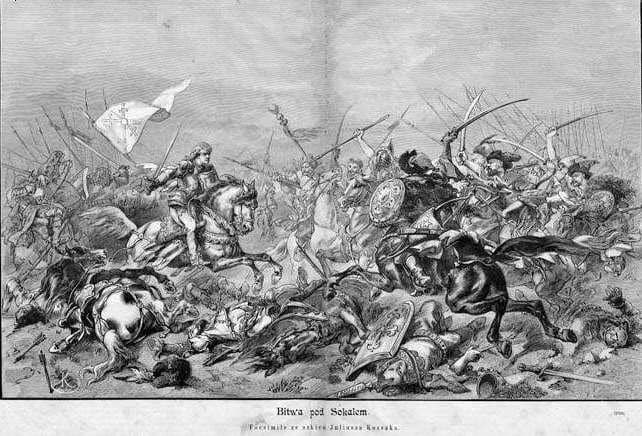
August 2 marks 503 years since the Battle of Sokal, the famous battle took place in 1519 between the troops of the Grand Duchy of Lithuania and the Kingdom of Poland and the Crimean Khanate near Sokal
A military clash between the troops of the Grand Duchy of Lithuania and the Kingdom of Poland and the Crimean Khanate, which took place in August 1519 near Sokal.
In July 1519, the army of the Crimean Khanate, led by the kalga Bogatyr-Girey, invaded the Ukrainian regions of the Kingdom of Poland and the Grand Duchy of Lithuania. Volyn, Podillia and Halychyna were devastated. Crimean units also appeared in the vicinity of Lublin (Poland). Having collected a large amount of booty, Bogatyr began to return home.
The troops of Poland and the Grand Duchy of Lithuania moved to catch up with the Hordes. The meeting of opponents took place near the city of Sokal.
The Crimeans burned the city and camped nearby. The allies camped on the opposite bank of the West. Bugu (adj. Nareva, bas. Vistula). The Polish-Lithuanian army consisted of 2,000 Ukrainian nobility and 3,000 crown mercenaries. The Moldavian regiment of 600 soldiers, Ya. Tvorovsky’s detachment of 500 cavalrymen and at least 1,000 Ukrainian noblemen also rushed to help. General management was carried out by the Hetman of Lithuania, Prince K. Ostrozky. Moscow ambassadors in the Crimea counted his troops up to 20,000 soldiers. This, given the armed servants, seems real.
The number of the Crimean army is known only from the sources of the enemy side. According to them, it reached 40,000 soldiers. Efforts of the book K. Ostrozhsky to avoid an open battle indirectly confirms the numerical superiority of the Crimeans.
At the military meeting, the book K. Ostrozky suggested not to leave the fortified camp and wait for reinforcements. Polish government officials were of the same opinion: Podolsk Voivode M. Kaminetskyi and Royal Marshal and Lviv Starost S. Khodetskyi. However, some commanders of Polish units were in favor of offensive actions. In general, the council did not reach a final opinion.
In the morning of the next day, the helmsmen of the Polish mercenary army at their discretion began to cross the river and line up for the attack. Bogatyr-Girey resorted to the tactic of luring the enemy to the place of the burned Sokal. It bore fruit. Polish heavy cavalry, having entered the territory of the burning city, began to fall into the pits of the cellars at the place of the burnt houses. The order of battle of the Poles collapsed. The Crimeans quickly took advantage of this. Their light cavalry quickly located and surrounded enemy units. Prince K. Ostrozky, caught off guard by the advance of part of his army, had no choice but to cover the rear. Having gathered around him his regiments, as well as the detachments of the Galician nobility of M. Kaminetskyi, he was able to repulse all the attacks of the Tatars. And then, under the cover of the camp, withdraw the army from the encirclement and retreat safely.
Allied losses were high. One noble, not counting servants, lost 1,200 people. Many soldiers were captured. In a strategic sense, the battle was not of great importance. The following year, another Crimean invasion was repelled in Podilly. After that, Poland, Ukraine and Crimea. Khanate concluded an alliance agreement…
By the way, in 2019, the “Battle of Sokal in 1519” was 500 years old.

